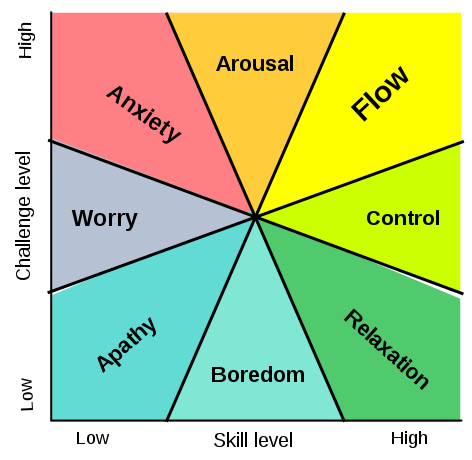Games have found their way to the training room quite a while ago. Initially, their purpose was to animate the room and bring some fun to learning. With the transformation of generations, however, much has changed in what is perceived as the norm in corporate training and games became the go-to for effective learning.
The main reason for this is the increased appetite Millennials have for gamification in all aspects of life but there is a lot more to be said about the role games have in contemporary organizational training and development programs.
Games get learners in the flow
Boredom is no friend of learning. This requires a state of concentration and engagement that Mihály Csíkszentmihályi called the flow — the mental state of operation in which a person performing an activity is fully immersed in a feeling of energized focus, full involvement, and enjoyment in the process of the activity. In essence, flow is characterized by complete absorption in what one does, and a resulting loss in one's sense of space and time.
Games manage to tap into our emotions through pleasure, reward, competition, surprise, and much more. They have the capacity to get us excited enough yet with the right tools (and rules) to be in control of the process. As seen below, those are precise GPS coordinates for finding and going with the flow:

Trial and error is the mother of learning
Failing is a big part of learning and games provide a safe environment for that to happen. When immersed in a virtual world, the learner feels at ease making decisions that may not lead to success but provide enormous learning opportunities.
Unlike videos, tests and quizzes, game-like materials allow the learner to go back and practice the content. As opposed to reading about it or watching somebody explain how things should work, in game form the learner can experience everything first hand.
Performing the tasks leads to better understanding and retention.
The ability to fail and start over provides a lot more opportunities than other teaching methods. One wrong answer on a quiz is immediately corrected but that holds no guarantee it will be assimilated and remembered. With game mechanisms in use, doing over a certain module (as you would do with a level in a video game) helps reinforce the content and gives the learner a much better chance of getting it right in real life.
Games tap into both the cognitive and the emotional
It is a common misconception that the cognitive part of the brain is by itself responsible for learning. Activities as comprehension, analysis and recollection are all associated with learning process. Games appeal to all these functions when the players are asked to make decisions based on the information they already have and hints that are available at a certain time.
Learning, however, has a very strong affective component, tapping into personal values, motivations, feelings and attitudes. Using game mechanics in e-learning ensures that the learner is immersed into the experience, gets to fully explore all the possibilities and manage the options as well as his own emotions when confronted with them.
It is a well-known fact that all decision making takes place in our reptilian, limbic brain and not our cognitive brain so it’s very important that the right gut-feelings or instincts are developed properly before being put to work on the job.
Gamification is proved to work
Theory sounds great but since we are talking about business training, it’s high time we took a look at some numbers.
Science Daily published a summary of a University of Colorado Denver Business School study that ‘found those trained on video games do their jobs better, have higher skills and retain information longer than workers learning in less interactive, more passive environments.’
The researchers analyzed 65 studies and data from 6,476 trainees and focused their review exclusively on studies that compared post-training outcomes for simulation game and comparison groups.
One of the most important conclusions were that all simulation games should be as engaging as possible, allowing the learner to actively participate and get immersed in the module.
Getting back to the numbers,
- declarative knowledge was 11% higher for trainees taught with simulation games than a comparison group;
- procedural knowledge was 14% higher;
- retention was 9% higher and
- self-efficacy was 20% higher.
This should be convincing enough of why games in e-learning do matter quite a lot.







